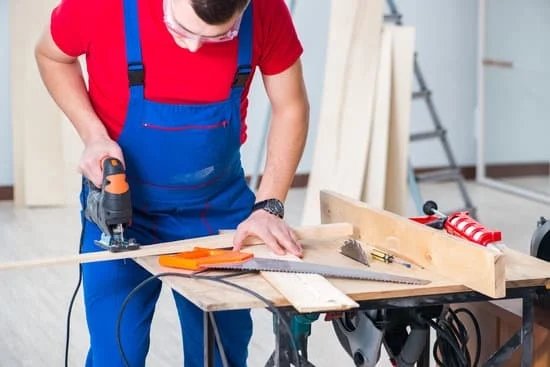Are you new to woodworking and not sure where to start when it comes to clamps? If you’ve been asking yourself, “what kind of clamps do I need for woodworking?” then you’ve come to the right place.
Clamps are essential tools in any woodworking shop, as they help hold pieces of wood together firmly while glue dries or when other processes are being carried out. In this article, we’ll cover everything you need to know about woodworking clamps, from the different types available to how to use them effectively and maintain them for long-lasting use.
When it comes to woodworking, having the right clamps can make a huge difference in the quality and outcome of your projects. There are various types of clamps specifically designed for woodworking, each serving different purposes and functions. From bar clamps and pipe clamps to spring clamps and C-clamps, understanding the differences between each type is crucial in choosing the right one for your specific project needs.
It’s important to understand the various functions of clamps in order to utilize them effectively in your woodworking projects. Whether you’re gluing pieces of wood together, holding items in place while working on them, or securing objects during assembly, knowing which clamp to use for each task will improve the precision and stability of your work.
In the following sections, we’ll delve into these functions and provide tips on how to choose the right clamps for different woodworking projects.
Types of Clamps for Woodworking
Woodworking requires the use of various types of clamps to secure and hold wood in place during the construction or repair process. There are several types of clamps commonly used in woodworking, each with its own specific function and purpose. Here are some of the most common types:
- Bar Clamps
- C-Clamps
- Spring Clamps
- Pipe Clamps
- Bench Clamps
- F-Clamps
Each type of clamp serves a different purpose and is best suited for certain woodworking tasks. For example, bar clamps are versatile and can be used for a wide range of projects, while pipe clamps are ideal for larger woodworking projects due to their ability to provide a high level of clamping pressure.
When considering what kind of clamps you need for woodworking, it is important to assess the specific requirements of your project and choose the appropriate type of clamp accordingly. Additionally, having a variety of clamp types on hand can be beneficial for versatility in woodworking tasks.
In addition to the above-mentioned types, there also specialized clamps such as edge clamps or band clamps that are designed for specific applications. By understanding the different functions and applications of each type of clamp, woodworkers can make informed decisions about which clamps to use for their projects.
Understanding the Different Functions of Clamps
Woodworking clamps are essential tools for holding wood pieces together firmly and securely during a woodworking project. There are several types of clamps available, each serving a different purpose in the woodworking process. Understanding the different functions of clamps is crucial for selecting the right ones for your woodworking projects.
Here are some common types of clamps used in woodworking:
- C-clamps: These versatile clamps are used for holding two pieces of wood together or securing a workpiece to a workbench.
- Bar clamps: Also known as F-clamps, these clamps have a long bar that provides stability and even pressure across the workpiece.
- Pipe clamps: These clamps consist of a length of pipe threaded at both ends, with one end fixed to a flat metal plate and the other end having a movable jaw. They are excellent for large glue-up jobs.
- Spring clamps: These small, lightweight clamps are ideal for holding smaller pieces together or securing materials temporarily while working on small projects.
Understanding the specific functions of each type of clamp will help you choose the right ones for your woodworking projects. For instance, if you are working on a large glue-up job, pipe clamps would be most suitable due to their ability to exert strong and even pressure across the workpiece.
In addition to selecting the right type of clamp, it is also important to consider factors such as size, grip strength, and throat depth when choosing clamps for woodworking projects. By understanding the different functions of clamps and considering these factors, you can ensure that you have the appropriate tools for your specific woodworking needs.
Choosing the Right Clamps for Different Woodworking Projects
When it comes to woodworking, having the right clamps for the job is crucial to ensure that your project turns out as planned. There are various types of clamps available, each serving a different purpose in woodworking.
One of the most common types of clamps used in woodworking is the bar clamp. These clamps are versatile and can be used for a wide range of projects, from assembling cabinets to gluing table tops. They come in various sizes, with longer bar clamps being ideal for larger projects and shorter ones for smaller tasks.
Another essential type of clamp is the pipe clamp, which is perfect for edge-gluing panels and tabletops. Pipe clamps are adjustable and can accommodate different lengths by using longer pipes, making them a great choice for larger projects.
For delicate or detailed work, such as when working with veneer or small joints, a spring clamp might be the best option. These lightweight clamps are easy to maneuver and apply gentle pressure without damaging the wood.
In addition to these common types of clamps, there are also specialty clamps available for specific woodworking tasks, such as frame assembly or picture framing. Understanding the different functions of each type of clamp will help you choose the right one for your specific project.
How to Use Clamps Effectively in Woodworking
Understanding the Basics of Using Clamps
When it comes to woodworking, using clamps effectively is essential for ensuring that your project turns out the way you want it to. Whether you are gluing pieces of wood together, securing a joint, or holding parts in place while they dry, the right use of clamps can make all the difference.
Understanding the basics of using clamps, such as how much pressure to apply and where to position them, is crucial for achieving professional-looking results in your woodworking projects.
Proper Positioning of Clamps
One important aspect of using clamps effectively in woodworking is knowing where and how to position them. Depending on the type of clamp you are using and the specific task at hand, proper positioning can vary. For example, when gluing two pieces of wood together, it’s important to evenly distribute pressure along the entire joint by placing clamps at regular intervals.
Maximizing the Use of Different Types of Clamps
Different types of clamps serve different purposes in woodworking, and understanding how to maximize their use can greatly improve the outcome of your projects. From parallel bar clamps and pipe clamps to spring clamps and C-clamps, each type has its own strengths and ideal uses. Knowing when and how to use each type of clamp effectively can help you achieve strong joints, secure holds, and precise alignments in your woodworking endeavors.
Maintenance and Care of Woodworking Clamps
Woodworking clamps are an essential tool for any woodworking project, but they require proper maintenance and care to ensure their longevity and effectiveness. Proper maintenance and care not only extend the life of your clamps but also help you achieve the best results in your woodworking projects.
One important aspect of maintaining woodworking clamps is to keep them clean and free from sawdust, wood shavings, and glue residue. After each use, it’s crucial to wipe down the clamps with a clean, dry cloth to remove any build-up that could affect their performance. In addition, regular inspection of the clamps for any signs of wear or damage is recommended to address any issues early on.
Proper storage is also key to maintaining woodworking clamps. Storing them in a clean and dry environment will prevent rust and corrosion, which can compromise the functionality of the clamps. It’s best to hang clamps on a rack or store them in a designated case to protect them from damage and ensure they are readily accessible when needed.
| Maintenance Tip | Care Tip |
|---|---|
| Regularly lubricate moving parts with a light oil | Avoid over-tightening the clamps to prevent strain on their mechanisms |
| Inspect handles for cracks or damage | Keep wooden clamp handles clean and free from moisture to prevent warping |
| Store clamps in a cool, dry place away from direct sunlight | Avoid exposing metal parts to harsh chemicals that can cause corrosion |
Tips and Tricks for Getting the Most Out of Your Clamps
When it comes to woodworking, having the right clamps and knowing how to use them effectively can make a world of difference in the quality of your projects. Here are some tips and tricks for getting the most out of your clamps.
Proper Clamp Selection
One of the most important factors in getting the most out of your clamps is choosing the right ones for the job. Depending on the project, you may need different types of clamps such as bar clamps, pipe clamps, C-clamps, or spring clamps. Consider the size and weight of your project, as well as the type of pressure and reach required for adequate clamping.
Even Distribution of Pressure
To prevent any damage to your woodworking project, ensure that there is an even distribution of pressure across the entire surface where the clamp is being used. This will prevent any warping or bending that could occur from uneven pressure distribution.
Protect Your Woodworking Pieces
When using clamps on woodworking projects, it’s essential to protect your wood pieces from being damaged by the clamp itself. Padded clamp jaws or scraps of wood can be used to distribute the pressure and protect delicate surfaces from denting or marring.
Recommended Clamps for Beginners in Woodworking
In conclusion, having the right clamps is essential for any woodworking project. Whether you are just starting out or have been woodworking for years, understanding the different types and functions of clamps is crucial. The right clamps can make your projects easier and safer, while the wrong ones can lead to frustration and potentially even ruin your work.
When it comes to choosing the right clamps for different woodworking projects, it’s important to consider factors such as the size of the project, the type of wood being used, and the specific tasks involved. From bar clamps to quick-release clamps, each type has its own unique benefits and applications. It’s vital to invest in a variety of clamps so that you have the right tool for every job.
Lastly, maintaining and caring for your woodworking clamps is essential to ensure they last a long time and continue to perform effectively. Keep them clean and free of rust, store them properly when not in use, and inspect them regularly for any signs of wear or damage. By taking good care of your clamps, you’ll be able to get the most out of them for many years to come.
So, remember – when asking yourself “what kind of clamps do I need for woodworking? “, consider the specific needs of your projects and invest in a variety of high-quality clamps.

Hi everyone! I’m a woodworker and blogger, and this is my woodworking blog. In my blog, I share tips and tricks for woodworkers of all skill levels, as well as project ideas that you can try yourself.





